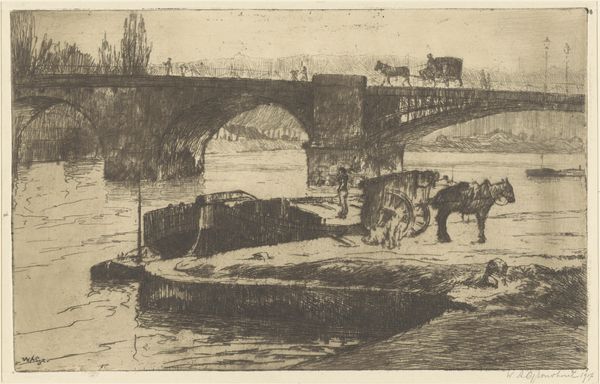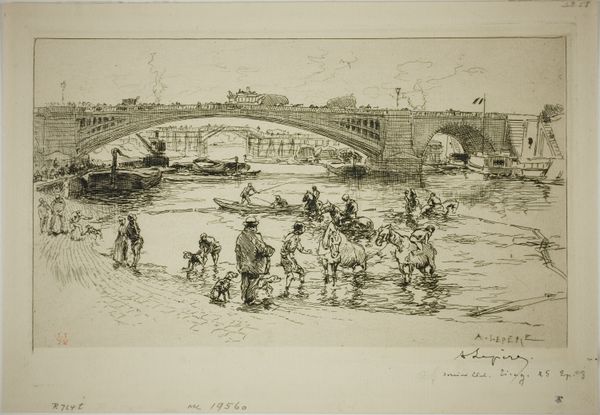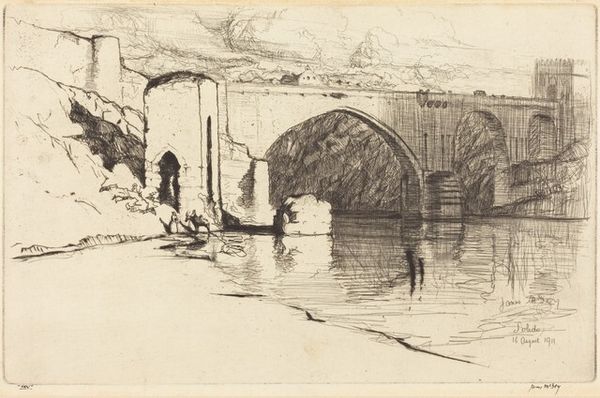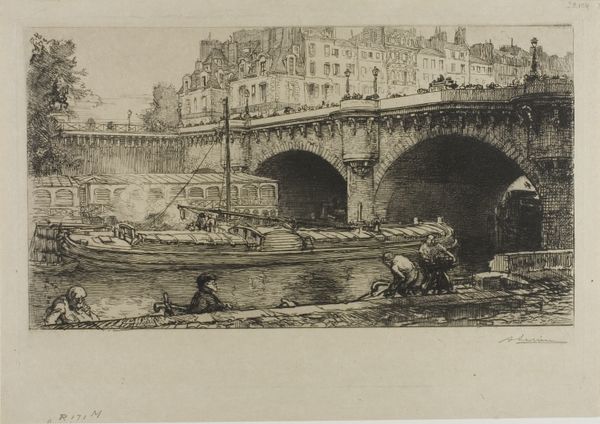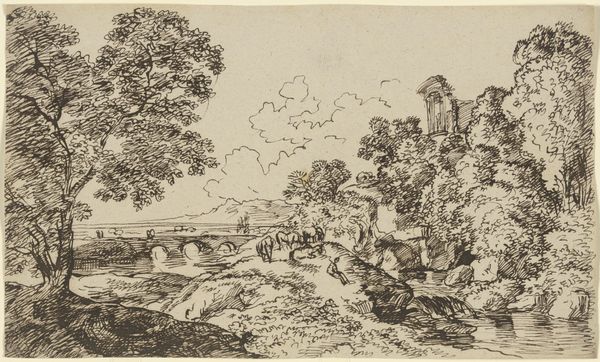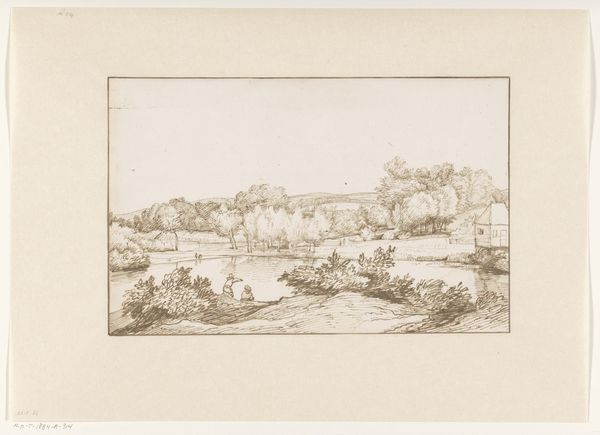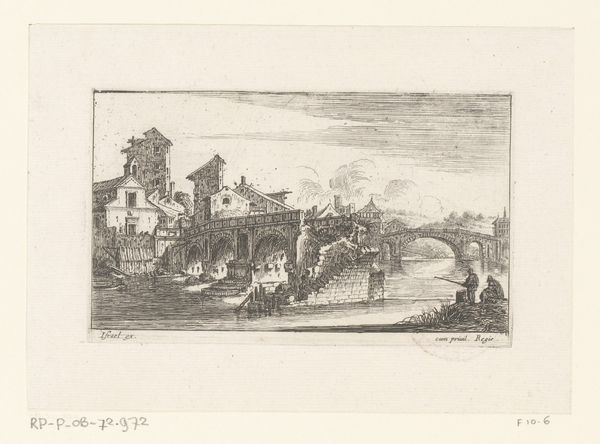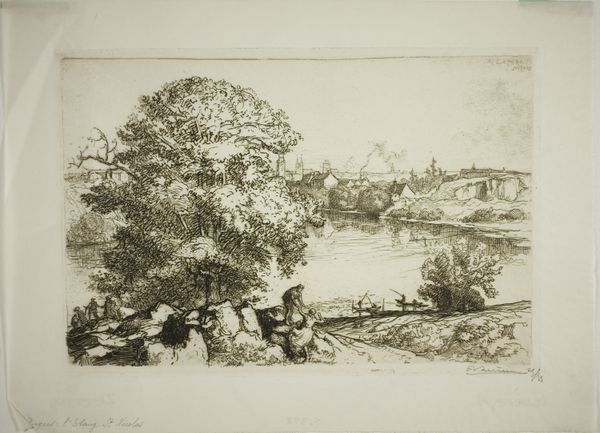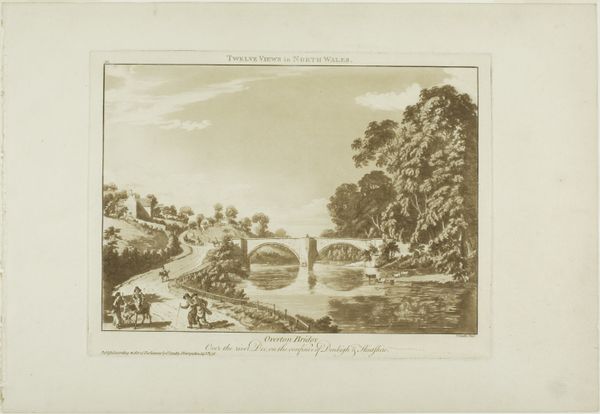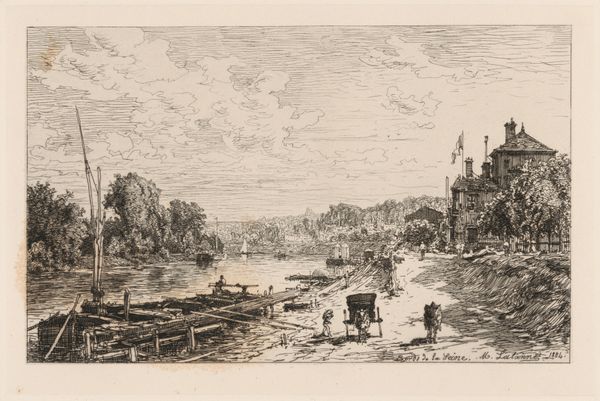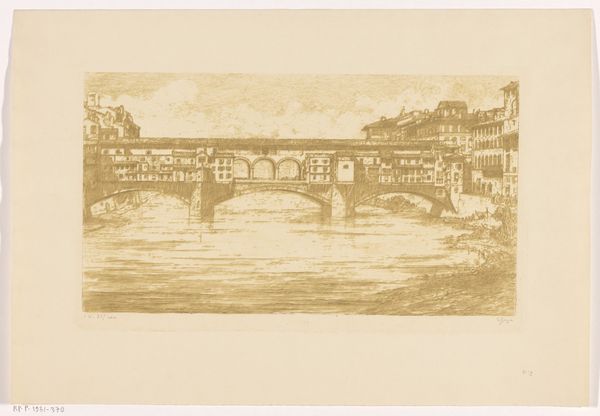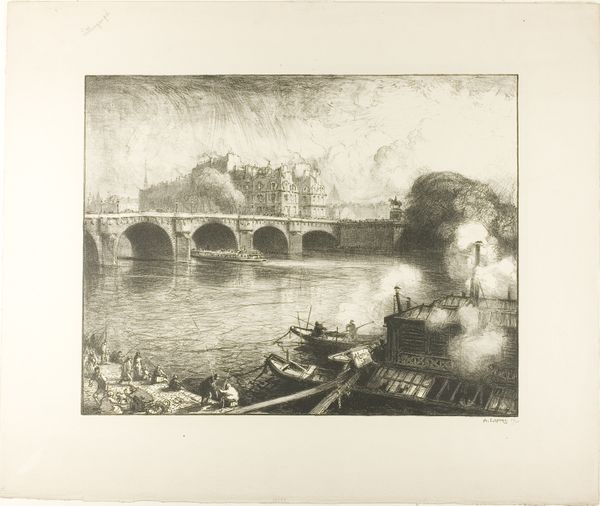
Dimensions: 156 × 236 mm (image/plate); 233 × 303 mm (sheet)
Copyright: Public Domain
Curator: Today we will be discussing "The Watering Place at the Pont Marie," an etching by Auguste-Louis Lepère, created in 1902. Editor: This piece evokes a sense of bustling Parisian life, yet it’s tempered by a certain rustic quality. The figures seem immersed in everyday labor, grounding the otherwise romantic cityscape. Curator: Exactly. Note the skillful use of line to define form and texture. Lepère employs varying densities of hatching to create a nuanced interplay of light and shadow, defining depth on the water's surface, creating a contrast to the structures on the banks. Editor: The contrast in the etching is quite striking. The labor happening at the shore seems a world away from the privileged promenaders crossing the Pont Marie in the distance, no? We must question the representation of the working class in a Belle Époque Paris rapidly changing with modernization and disparity. Curator: Perhaps. Still, the formal organization is compelling, leading the eye from the foreground figures toward the architectural features, linking labor with city life. Look at the careful alignment of the bridge's curve with the cityscape beyond. Editor: That is an interesting formal feature. Although Lepère frames Parisian laborers intimately alongside working animals, what remains beyond the bridge and riverbank is how industrialism touches everything, a critique of modernization during the time. Curator: To your point, the print displays an interest in the juxtaposition between rural life and urban existence, where it's neither complimentary nor judgemental but observing and framing those distinctions between groups, like those at the water's edge and the buildings and residents overlooking. Editor: This work makes us think about the different ways that people exist in the city. Curator: Precisely. It invites contemplation on not just what we see, but how visual rhetoric organizes those images to influence viewers.
Comments
No comments
Be the first to comment and join the conversation on the ultimate creative platform.
